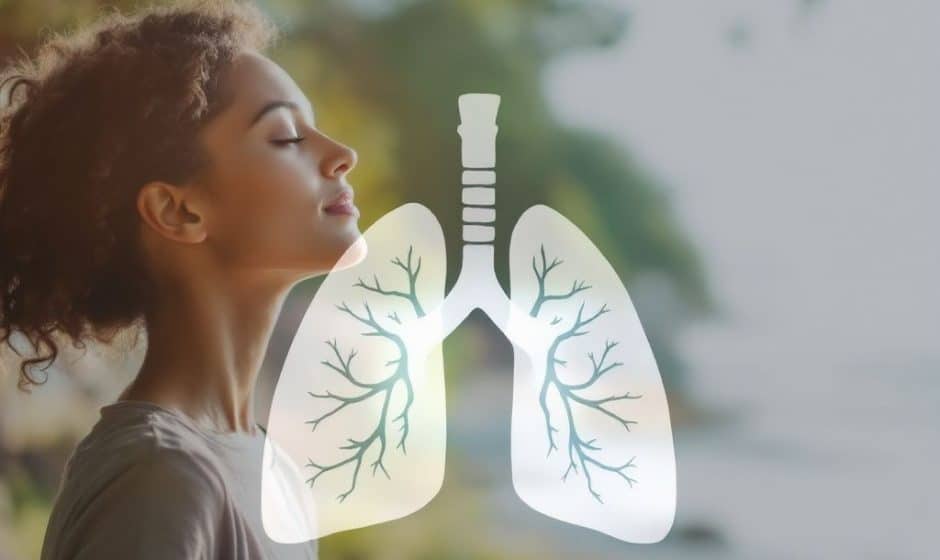Ever lay awake at night, your labored breathing playing like a silent horror movie in the background? For those grappling with Chronic Obstructive Pulmonary Disease (COPD), managing breathing is a daily battle. But what if we told you that hormones play a star support role in this respiratory saga? Yeah, that’s right—hormone regulation could be the game-changer you’ve been missing out on.
So, let’s chat about it. We’re digging into how balancing those sneaky, not-often-seen elements can impact your lung function and overall well-being. We’ll go elbow-deep into the relationship between hormones and COPD support in a way that feels cozy…like a conversation with an old friend.
Why Hormones Matter in Lung Health
First things first, let’s get this straight: hormones are ridiculously important messengers in your body, orchestrating everything from mood swings to metabolism. When it comes to lungs, particularly for those living with COPD, hormones like cortisol, estrogen, and testosterone can either make things swell or get worse. And yep, it gets overlooked far too often—something about foggy gazes when “hormone talk” comes up.
The Connection: Hormones and Your Lungs
**Cortisol** – Guess what? This stress hormone is on 24/7 duty. Its main gigs are to keep inflammation down and regulate your body’s use of carbs, fats, and proteins. But here’s where it gets tricky—chronic stress can ramp cortisol levels up to flare territory, exaggerating COPD symptoms. Yup, stress getting in your lungs—literally.
**Estrogen and Testosterone** – These aren’t just for giggles in health class. Estrogen has a neat trick: it supports blood flow and reduces inflammation. Testosterone pitches in muscle strength, including the muscles hanging out in your chest. Imbalanced levels can meddle with lung function—particularly if you’re facing COPD.

Now I’m gonna throw an idea your way. Try thinking about hormonal balance as a safety net for your lung health. When correctly balanced, hormones act like a skilled orchestra syncing every critical player to play a symphony. But hit a few wrong notes due to stress or lifestyle factors, and it becomes a headache, risking respiratory distress just when you don’t need it.
Taking Steps Toward Balance
So, what can you do? Well, if you’re eyeballing a life with better-managed COPD, let’s run through how you can keep your hormones on the level. A fair bit might sound like old news—eat well and move often—but hold on, because some of this might genuinely change your day-to-day respiratory experience.
Eating for Hormonal Harmony
Here’s the lowdown on how food can actually act as a helper for hormone regulation.
- Gobble up Healthy Fats: Omega-3 fatty acids—you’ll find them swimming in fish like salmon—can inflame inflammation and spruce up lung function. Nuts, seeds, and olive oil are your pals, too.
- Savor Your Fruits and Veggies: Naturally, they’re loaded with antioxidants which, in non-scientific terms, put on armor against inflammation. The richer the color, the better the protection.
- Protein Partners: Steady sources like lentils, beans, and lean meats can stay your best allies in maintaining hormone levels effectively. Particularly in dodging muscle mass loss which directly hits your breathing capabilities.
Exercise: Moving with Purpose

You saw this coming. But exercise isn’t merely a weighty topic—it’s dynamite for addressing both hormone levels and COPD support detail by detail.
- The Cardio Puzzle: Light, regular cardio strikes the right tune, boosting your lung capacity step by step and releasing those feel-good hormones. Think brisk walks or relaxed cycle times.
- Strength Training to Solidify Growth: Keep those muscles strong, especially ‘round the chest area. Reinforcing diaphragm muscles through light weights under supervision can spell stronger respiratory efforts.
**P.S.**: Bouts of exercise also help reign in cortisol—which helps in reducing inflammation hanging around your muscles waiting to gum up your breathing apparatus.
The Role of Relaxation: Stress Management
Yeah yeah, relax…I can almost hear ya groan. But take heed—stress gums up the works, and why not clear it when it clogs hormone function too?
- Mind-Body Balance: Give yoga or tai chi a whirl to slash stress and prepare your mind for more liberated breathing. Ever heard of breathing into your belly? Yes, we’re serious! Imagine that tummy rising, reigning all in superb calm.
- Sleep is Non-Negotiable: Getting quality rest brings cortisol down and launches some lovely balance across the board.
Supplement Safely, If You Need To

Before jumping to the vitamin aisle, consult your doc—seriously! Certain supplements can back up your dietary routine in pinning just-right hormone levels:
- Vitamin D: Strikes a pose in supporting lung health and balance by regulating hormone secretion, more so post-sunshine days.
- Omega-3 Supplementation: Between work and exhaustion, getting enough fish could be tough, so adding in these healthy fats keeps your levels steady.
Looping it All Together
At this moment, we’ve skimmed quite the diverse field here, bouncing from hormone balance’s intricate math to a feast and exercise’s everyday wonders, with stress in the rearview mirror waving slightly.
To chalk it up, figure this: You’re crafting better lung function through balancing hormones, all as easily as stacking the odds towards better health rather than against, even when facing COPD challenges dead center.
And above all else, be kind to yourself—if a day didn’t go as planned, remember harmonization is an ongoing tune. No need to rush mastering an opera overnight! The thrill and purpose ride tandem—bet on what genuinely feels good.
So let’s keep these conversations alive. Carry these tips into habitual space, find what blends best, and establish a rhythm upwards, enhancing that indispensable organ—the one resonating in each inhale and exhale!
Frequently Asked Questions
What causes a hormonal imbalance?
A hormonal imbalance can be caused by natural changes or stages in your life, including puberty, pregnancy, perimenopause, and menopause. Other factors such as genetics, aging, increased daily stress, poor nutrition, and lack of proper activity and fitness can also contribute to hormonal imbalances[3][5].
What are the signs and symptoms of a hormonal imbalance?
Signs and symptoms of a hormonal imbalance can include irritability and fatigue, mood swings and depression, skin dryness and loss of elasticity, water retention and weight gain, osteoporosis and joint pain, less interest in sex, insomnia and other sleep disorders, and memory issues and difficulty concentrating[3][5].
How can hormone replacement therapy help with hormonal imbalances?
Hormone replacement therapy can help by restoring stable hormone levels, leading to improved sleep, increased energy, enhanced memory, better mood stability, smoother skin, increased interest in sex, better weight regulation, and joint and bone protection. Bio-identical hormone replacement therapy, in particular, uses hormones identical in structure to those produced by the human body and may have fewer side effects than traditional hormone replacement therapy[1][3].
What dietary changes can help in maintaining hormonal balance?
Dietary changes such as consuming clean proteins like nuts, beans, and lentils, lean proteins from organic pasture-raised chicken, sardines, and salmon, healthy fats from coconut oil, and leafy vegetables like broccoli, spinach, and asparagus can help in maintaining hormonal balance. These foods are rich in antioxidants and support a healthy endocrine system[4].
References



